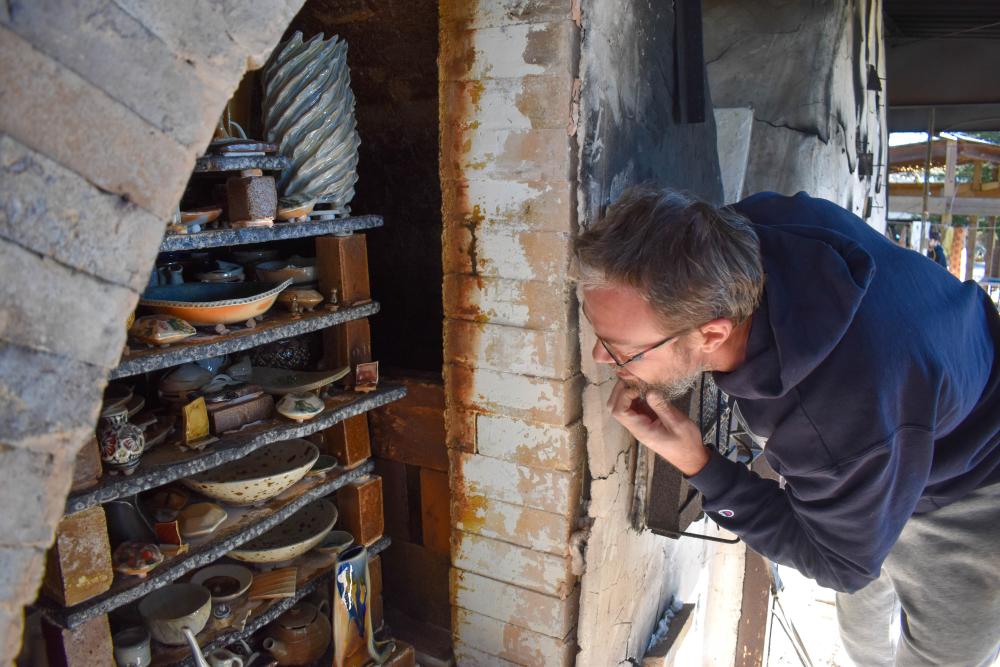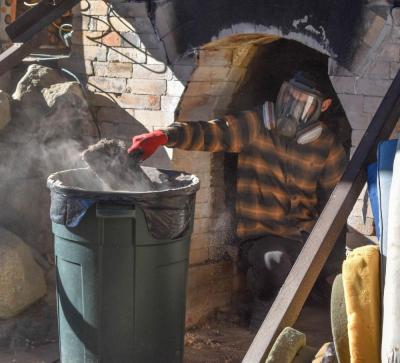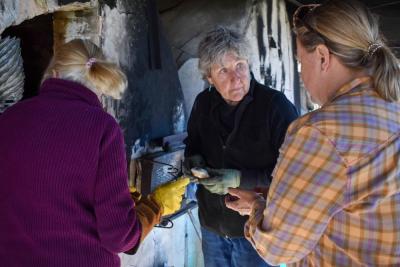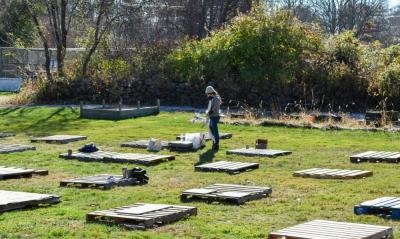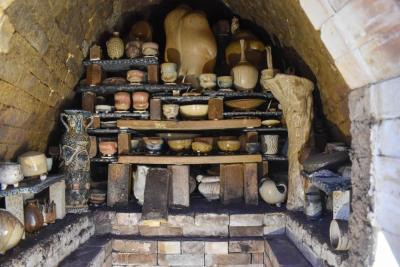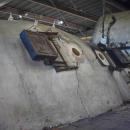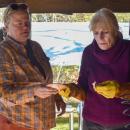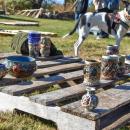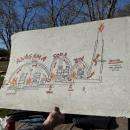‘Kiln it’: Building community and making rare art in Dartmouth
Almost like Thanksgiving, on Saturday, Nov. 17, a community gathered around what could be considered a rather large oven, but instead of pulling out stuffed turkeys and casserole, artists were picking up their latest projects.
What once started as an academic exercise has grown and flourished into a community of artists from across the country, all coming together with the common goal of firing the wood kiln in Dartmouth for the last 30 years.
Gathering once again that Saturday to unload their latest approximately 2,000 ceramic pieces, members of the group shared how the kiln came to be.
Back in the 90s, Chris Gustin led a group of students at UMass Dartmouth, which was at the time Southeastern Massachusetts University, through a course in building a wood kiln.
“He built it with the idea that you have to develop a community to build a kiln” and fire it, said Seth Rainville, who was an original member of the class.
Rainville recalled the class prior to the build: “Our studio was in an old gymnasium in New Bedford, with doors that didn’t lock, heat that barely worked and a bunch of ragtag people kind of just making pots in there.”
But a year after those shovels hit the frozen ground, they found themselves with a finished wood kiln.
Gustin’s kiln has three chambers, the first of which is designed after a Japanese-style kiln known as an Anagama, meaning “hill climbing,” Rainville said.
Each chamber is built on an incline to achieve the hill climbing effect. The wood is fed into the first chamber and as the heat rises, it flows through the remaining chambers, which are later also fueled with wood, according to Gordon Gleason, Gustin’s sole studio assistant.
“The main difference between wood fired ceramics, gas fire and electric is that for a wood kiln, it’s hot enough that all the wood ash melts and turns into a glaze flying through the kiln, so the pieces are not just the results of the clay body and the glaze they were using, but the atmosphere in the kiln,” Gleason explained.
Additionally, in the second chamber of the kiln, the group adds sodium carbonate, spraying it when at peak temperatures, which changes the atmosphere, leaving the pieces glossier and warmer. The final chamber receives all the residual soda and wood ash.
“So a lot of really cool results, but the whole process is very much so a process, and it takes a community to fire it,” he said. It takes a week to load the kiln, filling all three chambers at once, then six days to fire it.
Temperatures inside the kiln exceed 2,300 degrees and though it may not get as hot as other kilns, it holds the heat for longer periods of time.
Stoking the fire is no easy feat either. Steve Murphy, who joined the group about 20 years ago, said the six days of feeding the fire are broken down by chamber and it must be stoked every eight to 12 minutes.
Gleason said, “At the peak of the fire, when stuff is roaring, the air moving through the front chamber is moving over 20 miles an hour.”
This, in addition to the sticky wood ash glaze, means the ceramic pieces are vulnerable to damage. The group has a few methods to combat this, such as using wads on the bottoms of all their pieces, which are like clay stilts so the items are not sitting directly on the shelves.
“There’s loss in a wood firing, but the results are so magical that you can’t stop doing it,” Gleason said.
The wood kiln takes three weeks to cool off once it's done firing and even then, when the team opened it up on Saturday, the temperature inside was still 70 degrees despite temps outside reaching the 30s.
Given the amount of work that goes into it, Gleason said, “We only fire this kiln twice a year, so these unloads are like Christmas."
Slowly and carefully, the artists unloaded each of the kiln’s chambers, placing the approximately 2,000 pieces on a field of pallets labeled by artist.
The work and community required to operate the kiln also make it a rare experience. Rainville said these are largely operated by universities for that reason, but that means the community changes every four years.
Though the Dartmouth wood kiln is no longer associated with an institution, it still has a number of educators involved who, along with others, have made up the core of the group and are always welcoming others to learn about and participate in the community, Rainville said.
He highlighted his favorite memory being when he and Gustin worked to bring 11 artists from the west coast and 11 from New England together in an effort to broaden the kiln’s reach. After a very successful dinner, he and Gustin knew they needed to do this on a bigger scale.
Rainville said the public are always welcome to come, all they have to do is contact Gustin through his studio website: gustinceramics.com. Though typically there leading every unloading, Gustin wasn’t able to join the group until later due to his plane getting delayed.



